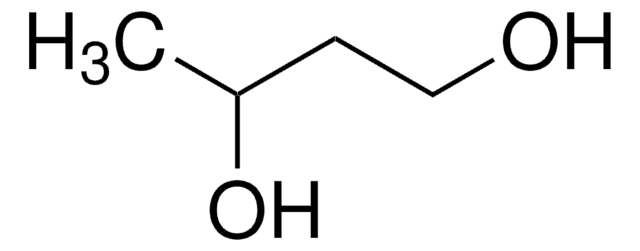Key Documents
Y0001547
Propylene glycol
European Pharmacopoeia (EP) Reference Standard
Synonim(y):
1,2-Propanediol, Propylene glycol
About This Item
Polecane produkty
klasa czystości
pharmaceutical primary standard
gęstość pary
2.62 (vs air)
ciśnienie pary
0.08 mmHg ( 20 °C)
rodzina API
propylene glycol
temp. samozapłonu
779 °F
granice wybuchowości
12.5 %
producent / nazwa handlowa
EDQM
współczynnik refrakcji
n20/D 1.432 (lit.)
tw
187 °C (lit.)
mp
−60 °C (lit.)
gęstość
1.036 g/mL at 25 °C (lit.)
Zastosowanie
pharmaceutical (small molecule)
format
neat
temp. przechowywania
2-8°C
ciąg SMILES
CC(O)CO
InChI
1S/C3H8O2/c1-3(5)2-4/h3-5H,2H2,1H3
Klucz InChI
DNIAPMSPPWPWGF-UHFFFAOYSA-N
Szukasz podobnych produktów? Odwiedź Przewodnik dotyczący porównywania produktów
Opis ogólny
Zastosowanie
Opakowanie
Inne uwagi
produkt powiązany
Kod klasy składowania
11 - Combustible Solids
Klasa zagrożenia wodnego (WGK)
WGK 1
Temperatura zapłonu (°F)
219.2 °F - closed cup
Temperatura zapłonu (°C)
104 °C - closed cup
Wybierz jedną z najnowszych wersji:
Certyfikaty analizy (CoA)
Przepraszamy, ale COA dla tego produktu nie jest aktualnie dostępny online.
Proszę o kontakt, jeśli potrzebna jest pomoc Obsługa Klienta
Masz już ten produkt?
Dokumenty związane z niedawno zakupionymi produktami zostały zamieszczone w Bibliotece dokumentów.
Klienci oglądali również te produkty
Nasz zespół naukowców ma doświadczenie we wszystkich obszarach badań, w tym w naukach przyrodniczych, materiałoznawstwie, syntezie chemicznej, chromatografii, analityce i wielu innych dziedzinach.
Skontaktuj się z zespołem ds. pomocy technicznej








